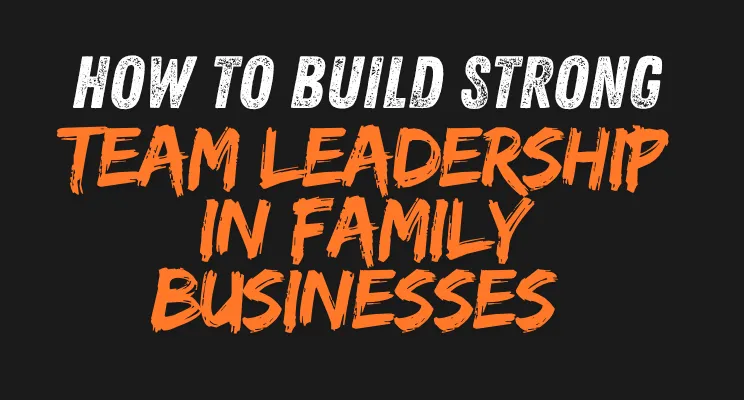
How To Build Strong Team Leadership in Family Businesses
The Emotional Terrain That Most Leaders Skip
I’ve worked with enough family businesses to know this: it’s not the strategy that fails. It’s the leadership dynamic. You can have a great product, strong cash flow, and years of brand equity but if your leadership team is tied up in emotional knots, you’ll struggle to scale past survival.
This isn’t about a lack of talent or vision. It’s about what happens when roles blur, when conversations avoid the truth, and when generations collide without a map. Most family businesses aren’t short on dedication. What they’re short on is clarity, structure, and the ability to separate legacy from leadership.
Here’s what I’ve seen up close: someone calls themselves the “managing director” but acts like the founder’s assistant. The founder says they’ve handed over control but still signs off on every decision. Siblings run departments with silent tension. No one’s openly talking about power but everyone’s reacting to it.
If that sounds familiar, it’s because this pattern isn’t rare. It’s widespread. And if you want your business to grow beyond your surname, it’s the first thing you need to confront.
The Three Silent Killers of Team Leadership in Family Firms
1. Emotional History > Role Clarity
Most leadership teams in family businesses aren’t built they evolve. A cousin shows promise and gets placed in operations. A daughter steps in after university. A spouse helps with finance. At first, it works. But without formalised roles, expectations become assumed, and assumptions breed disappointment.
Eventually, you end up with a team operating on history, not structure. Decisions are based on feelings. Authority is unclear. Feedback becomes personal. Leadership isn’t about driving outcomes it’s about avoiding conflict.
2. Loyalty Over Accountability
In family businesses, loyalty is sacred. And rightly so. But when loyalty replaces performance, culture begins to rot. Leaders stop giving honest feedback. Underperformance is tolerated. The family name becomes a shield for mediocrity.
In a 2023 study by the Family Business Institute, 67% of family-run companies admitted they retain underperforming executives longer than non-family counterparts due to relational pressure. That’s not sustainable leadership it’s cultural sabotage.
3. Fear of Disruption
Founders often carry emotional responsibility for everyone in the room. So they avoid shaking the boat. They don’t restructure because it feels like betrayal. They don’t challenge old systems because “that’s how Dad did it.” They confuse legacy with immovability.
The result? Decision paralysis. Good ideas go stale. Innovation gets suffocated. And the team begins to silently check out even if they never leave the payroll.
So, How Do You Fix It?
1. Separate the Business from the Family Not the People
This doesn’t mean stripping emotion from your business. It means giving the business its own structure, clarity, and operating principles ones that serve performance and sustainability, not sentiment.
Create role charters. Define what success looks like for every executive even if they’re family. Make performance reviews non-negotiable. Let the business breathe beyond the family hierarchy.
2. Build Leadership on Competence, Not Convenience
Just because someone is available doesn’t mean they’re the right person for the role. Invest in leadership development. Offer coaching. Build a leadership pipeline that goes beyond bloodline.
The most sustainable family businesses are led by leaders who earn trust, not inherit it. That’s the foundation of a credible executive culture.
3. Address the Hard Stuff Out Loud
Too many family-led teams confuse silence for peace. In reality, silence is where dysfunction grows. Open up structured communication rhythms. Facilitate alignment meetings. Name the elephants in the room even if they wear your surname.
Psychological safety doesn’t mean we never disagree. It means we know how to disagree without destroying the team.
Legacy Is Not Enough
If your leadership culture is built on memory, it won’t survive the next wave of growth. Team leadership isn’t about keeping things running. It’s about building the internal architecture that holds pressure, invites innovation, and scales responsibly.
This is what I teach inside my coaching frameworks:
Clarify the structure before you scale.
Separate emotional patterns from operational decisions.
Create space for growth by letting go of roles you’ve outgrown.
Strong leadership in a family business doesn’t just honour the past. It protects the future.
